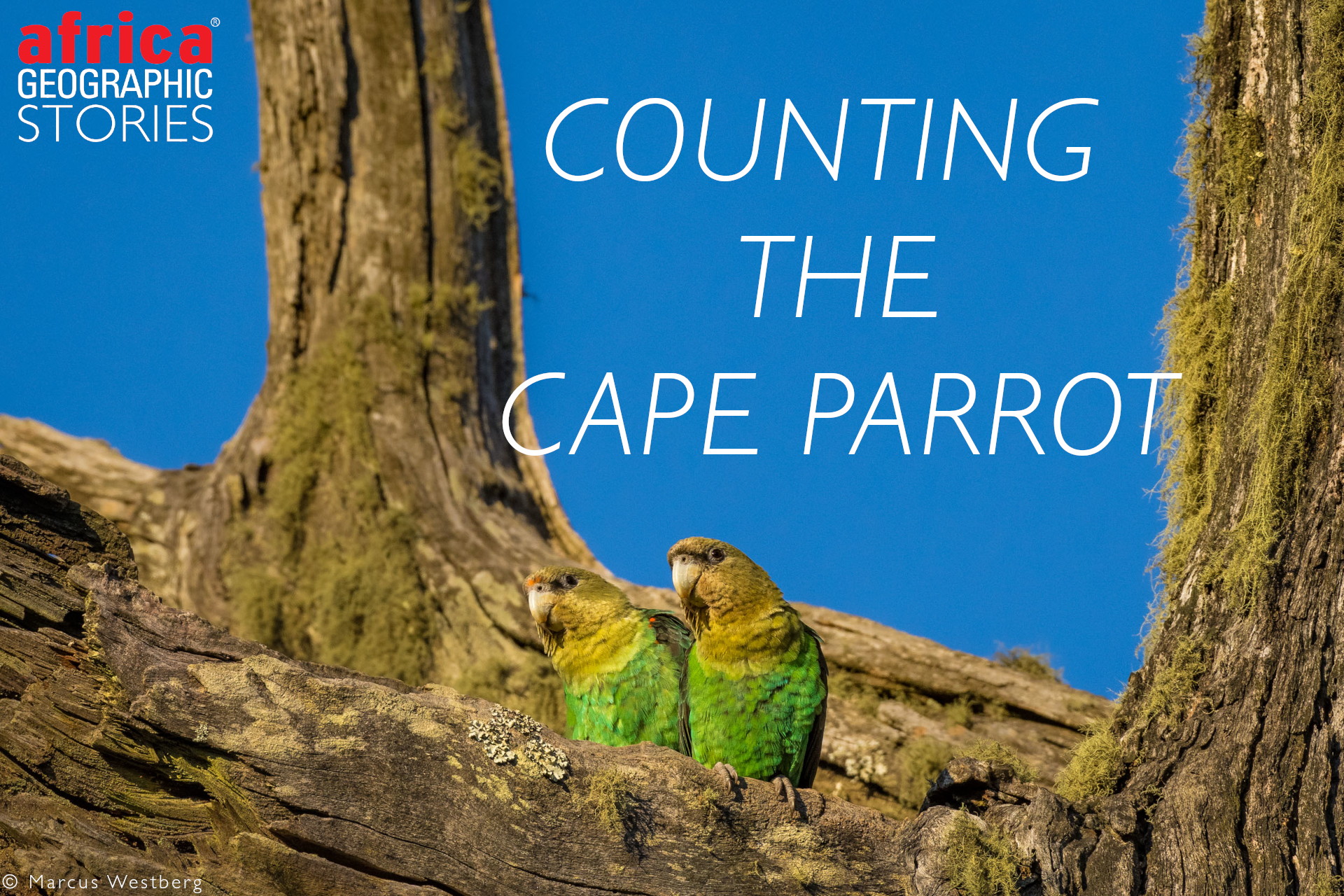

Twenty-seven of Africa’s rarest parrots – the Cape parrot – cavorted in the pecan nut trees above us, screeching as they played, squabbling and scoffing delicious, ripe nuts. I was entranced and rooted to the spot, absorbed by the energy and amazingness of the moment. But for the next few days, when it mattered, we saw no parrots.
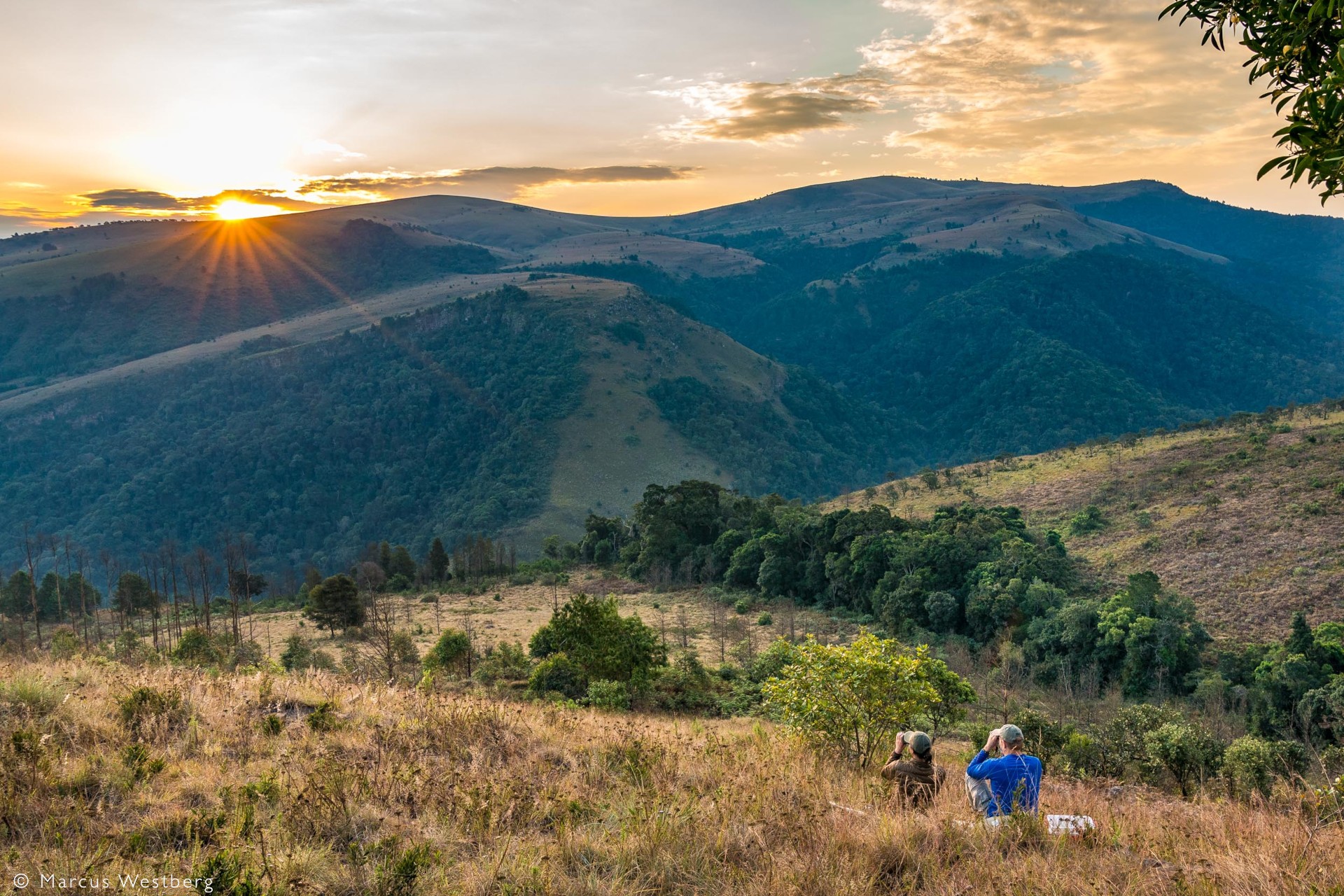
We were in Magoebaskloof, South Africa, enjoying a sneak peek at these national treasures at a popular Cape parrot hangout the day before our participation in the annual Cape Parrot Big Birding Day. For the following two days, our designated count site was atop a remote mountain a few hours drive away. My counting partners and I – teamAG – were in an old pecan nut grove on a working farm, with local birdman extraordinaire and professional guide David Letsoalo. The tasty nuts are an irresistible temptation for parrots – especially with the decline of South Africa’s Mist-belt forests that contain the birds’ natural food sources (yellowwood and other indigenous tree fruit and nuts). Unfortunately, regular feasting on pecan nuts is terrible for parrot health – a bit like too much pizza for humans.
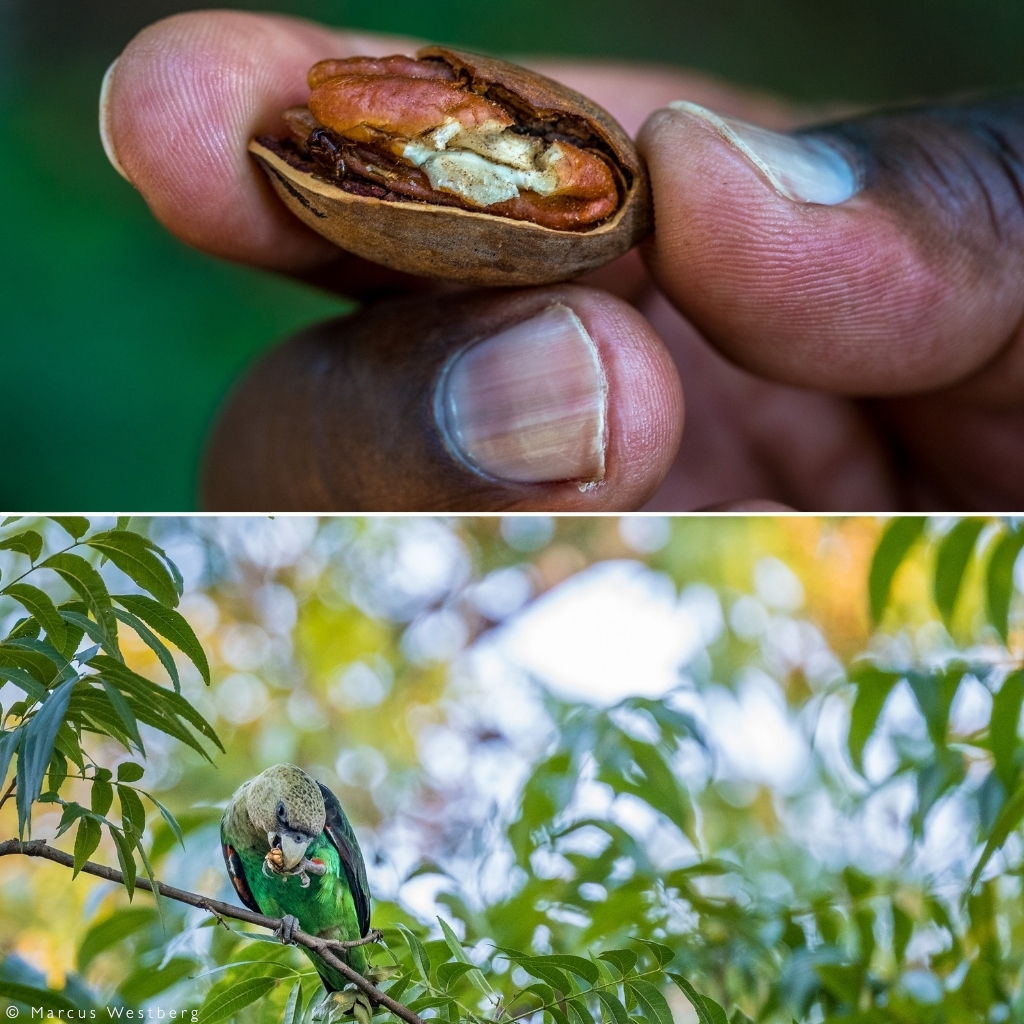

Before I get into the count itself, a quick shout out to Amorentia Farm owner Howard Blight and manager Wynand Espach, who host not only these unique birds that descend to mutilate their crop but also welcome crazy bird-watchers like me who come to see the Capes. The farm’s business model has moved away from pecan nut harvesting (although the trees have been left standing for the Capes to feast on) and now focuses on dragon fruit, ornamental flowers, avocado, and macadamia saplings. Howard and Wynand are rapidly becoming legendary ‘parrot-whisperers’, so passionate are they about their former nemeses. Thanks also to John Davies of Endangered Wildlife Trust, who put in long hours to arrange the Magoebaskloof counting groups.
Before heading to our count site the following morning, we spent more time with David scouting the indigenous forests around Magoebaskloof – his backyard. We were lucky again, relishing a few sightings of Capes, one at a nest site high in an old (alien) gum tree and another of a black sparrow-hawk hunting a flock of five parrots. During this thoroughly enjoyable morning, we also ticked off olive woodpecker, olive bushshrike, yellow-streaked greenbul, yellow woodland warbler, blue-mantled crested flycatcher and black-fronted bushshrike, amongst other avian jewels. David was a superb guide, and his intimate understanding of Cape parrots and immense birding skills make him a must-have guide for any birding trip to this area.
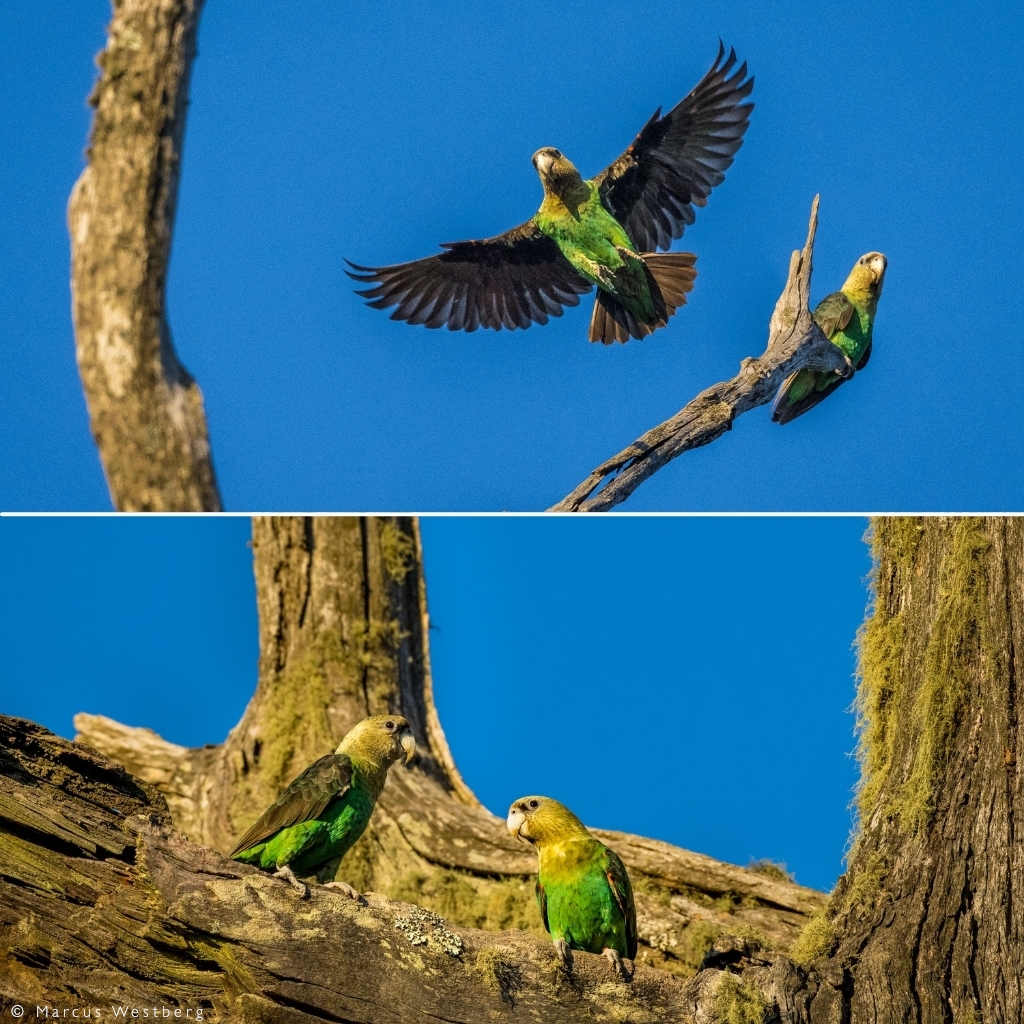
Okay, so back to the count. It was May, early winter, and even the Lowveld at this altitude can be inclement. And so it was – cold and blustery. TeamAG (me, safari product manager Nadia and Photographer of the Year runner-up Marcus) was allocated a never-before monitored site overlooking a deep ravine with snatches of forest below. Our spot was on a remote mountain plateau, so we required a four-wheel drive and camping equipment (including a spade …) for this off-the-grid adventure.
We sat diligently at our posts for the allocated late afternoon and early morning slots and heard a flock of three to five parrots noisily chattering as they winged their way to their roosts in the evening and again the following morning as they left to forage at lower altitudes. But unfortunately, we did not see them, because each time they flew by just below the lip of the ravine below us. This is why the farm and forest visits the day before were so special.
The two-day sojourn was thoroughly enjoyable, and we will be back next year – hopefully with more volunteers.
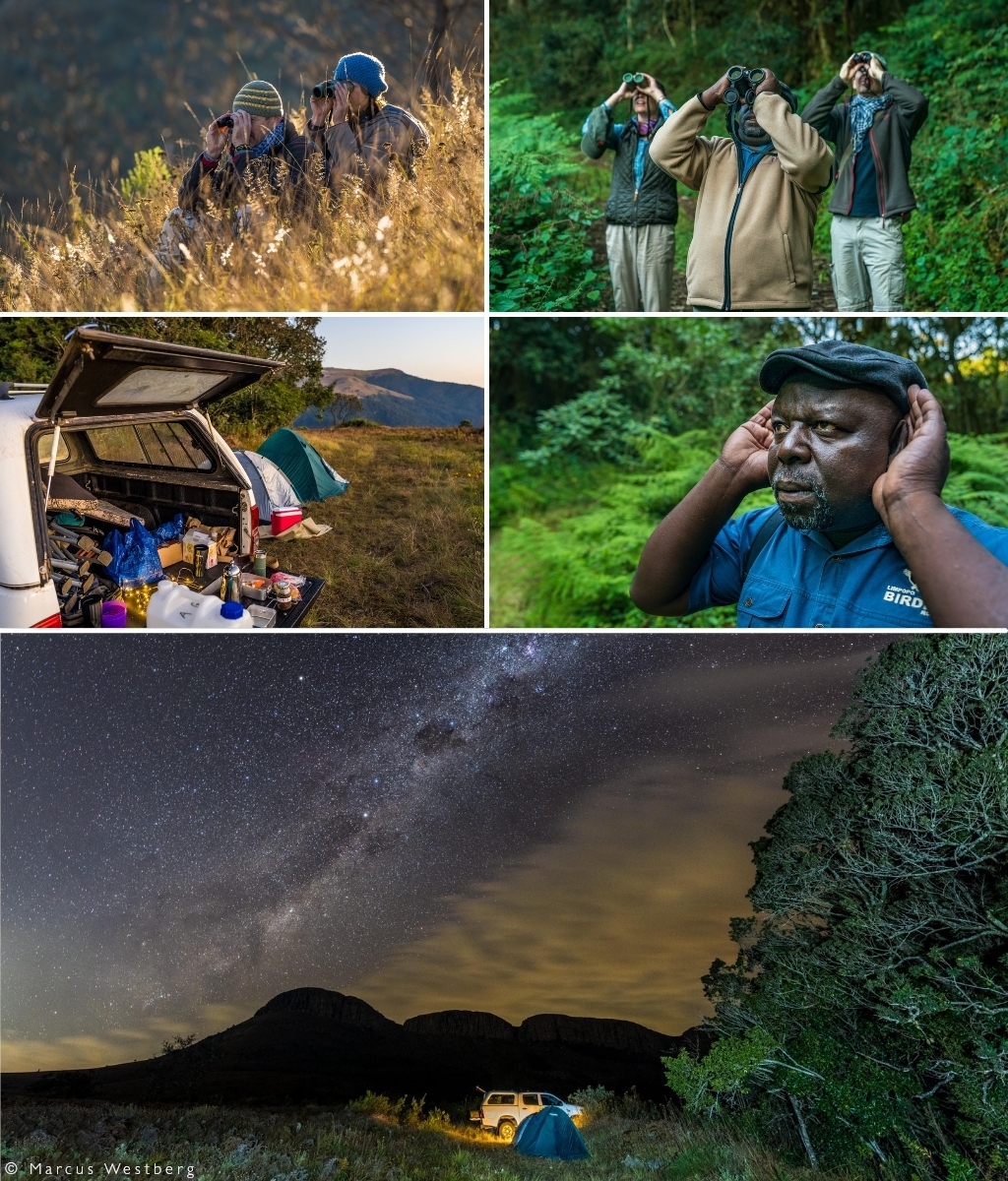
Others positioned in and around Magoebaskloof were luckier – as were groups at other count sites in KwaZulu-Natal and the Eastern Cape. That said, fewer birds were counted this year (1,477) than in 2019 (1,804).
Quote from Colleen Downs – Cape Parrot Working Group chairperson
“This was the 23rd count since we launched this fantastic citizen science project in 1998. The only year we did not count was in 2020 – for Covid reasons. This year 163 volunteers were posted at a minimum of 70 localities across the provinces. 2022 will be the 25th anniversary of the first count – a significant milestone. Please diarise Saturday 7 May and Sunday 8 May 2022 if you wish to help.”
Contact The Cape Parrot Working Group via email if you wish to volunteer for this epic adventure and become a much-valued citizen scientist.

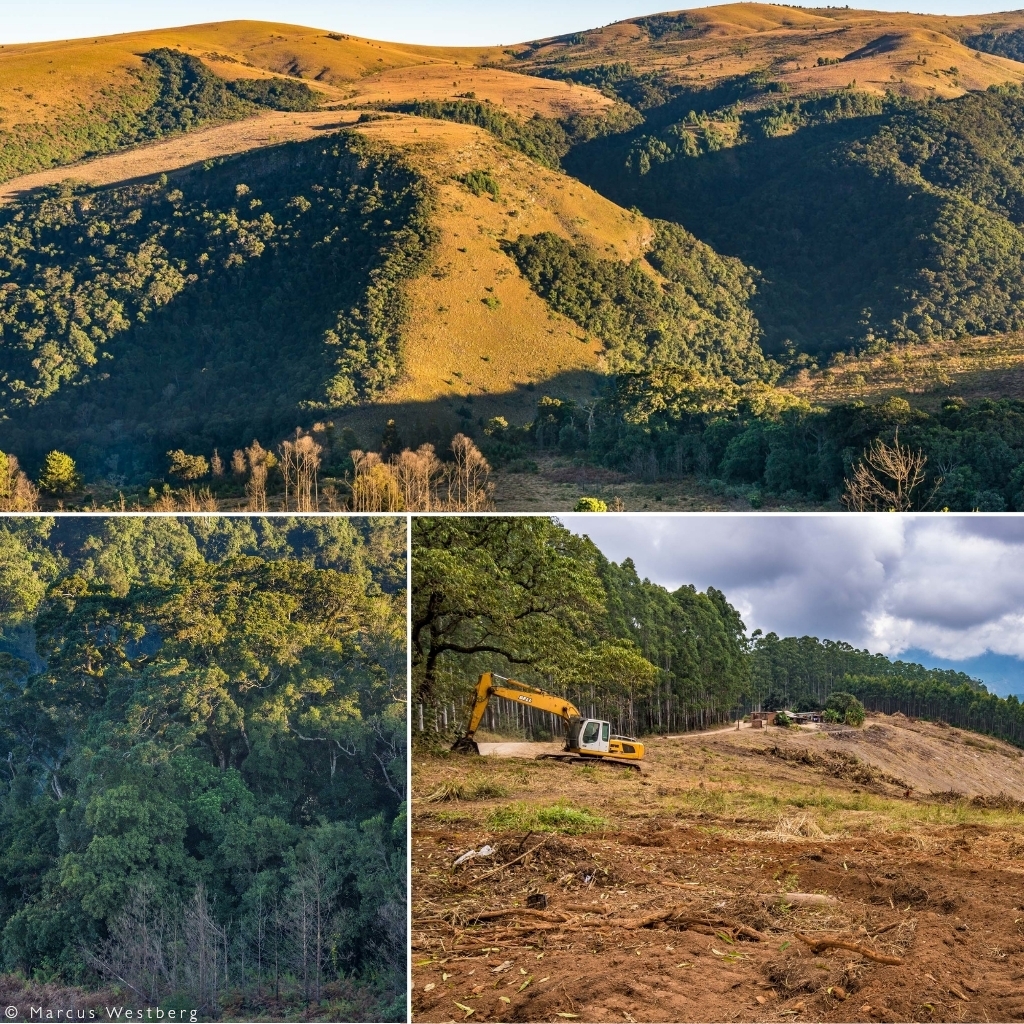
Resources
Download the results of the 2021 Cape parrot count here.
Further reading: The Cape Parrot and Finding Africa’s rarest parrot

To comment on this story: Login (or sign up) to our app here - it's a troll-free safe place 🙂.![]()




